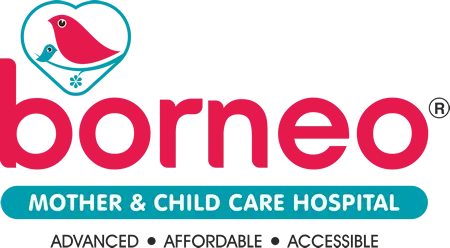In summary, introducing solid foods is a joyful and significant baby milestone that marks a whole new chapter in your little one’s development. This guide has provided a comprehensive, paediatrician-approved roadmap to help you start this journey with confidence.
We’ve detailed the crucial signs of readiness to look for, the golden rules of introducing new foods, and provided a practical, week-by-week Indian baby food chart filled with simple, nutritious, homemade recipes. We have aimed to transform this potentially anxious phase of child nutrition into an exciting adventure for you and your baby.
Ultimately, the most important takeaway is to embrace this process with patience and joy, remembering that every baby’s appetite and preferences are unique. The provided baby food chart is a flexible guide, not a strict prescription. The goal is to build a positive relationship with food that will last a lifetime.
While this guide covers many common questions, from allergies to fussy eating, a partnership with your paediatrician is essential. For any specific concerns about your child’s baby health, growth, or for a personalised child nutrition plan, a professional consultation is always the best and most reassuring next step.
Introduction
Watching your baby grow in their first few months is pure magic. And right around the six-month mark, a new and exciting adventure begins: introducing solid foods! This is a major baby milestone in your child’s development. But for many new parents, it also comes with a lot of questions. What should I feed them? How much? How do I even start?
It’s normal to feel a mix of excitement and thodi si (a little bit) of nervousness. At Borneo Hospitals, our paediatric team, led by our founder Dr. Santosh Madrewar, is here to guide you through this delicious new chapter. We believe that good child nutrition starts with simple, homemade food and a happy, relaxed approach.
This guide provides a complete readiness checklist and a sample Indian baby food chart to help you begin your baby’s lifelong journey with healthy food.
A Note from Our Paediatrician: Is Your Baby Ready for Solids?
Before you bring out the bowls and spoons, it’s crucial to ensure your baby is truly ready for solid foods. Age is just one factor; developmental readiness is the key.
The "Signs of Readiness" Checklist
Look for these three signs together. Your baby should:
1. Have Good Head Control:
Can they sit up with support and hold their head steady?
2. Show Interest in Food:
Do they watch you intently when you eat? Do they lean forward and open their mouth if you offer them food?
3. Have Lost the "Tongue-Thrust Reflex"
This is an important one. Newborns have a natural reflex that pushes food out of their mouths with their tongues. This reflex needs to be diminished so they can swallow food instead of pushing it out.
The Golden Rules of Starting Solids
Rule #1
One Food at a Time: Introduce only one new single-ingredient food every 3-4 days. This helps you easily identify any potential food allergies or sensitivities.
Rule #2
Texture is Key: Start with smooth, watery purées. As your baby gets comfortable, you can gradually make the texture thicker.
Rule #3
Timing Matters: Offer solids when your baby is happy, alert, and slightly hungry, but not starving. A good time is often about an hour after a milk feed.
Rule #4
Keep it Aaram Se (Relaxed): This is a new experience. If your baby turns their head away or refuses a food, don’t force it. Try again another day. The goal is to make mealtimes a positive experience.

Your Week-by-Week Indian Baby Food Chart (Month 6)
This chart is a sample guide. Always feed according to your baby’s appetite. Breast milk or formula remains their primary source of child nutrition at this stage.
Week 1: The First Tastes (Single Grain & Legume Soups)
The goal this week is just to get your baby used to a spoon and a new texture.
Sample Schedule and Foods:
- Mid-Morning (around 11 AM): Start with 1-2 teaspoons of Moong Dal Paani (thin moong lentil soup) or Rice Kanjee (thin rice gruel). Gradually increase the amount if your baby is interested.
- Rest of the Day: Continue with regular breast milk or formula feeds.
Week 2: Introducing Fruits (Single Fruit Purées)
Time to introduce some natural sweetness!
Sample Schedule and Foods:
- Mid-Morning: Continue with dal or rice soup.
- Early Evening (around 4 PM): Introduce 1-2 teaspoons of a single-fruit purée. Good first options are apple, pear, or papaya.
Week 3: Adding Vegetables (Single Vegetable Purées)
Now let’s add some savoury flavours.
Sample Schedule and Foods:
- Mid-Morning: Offer a fruit purée.
- Early Evening: Introduce 1-2 teaspoons of a single-vegetable purée. Start with naturally sweet vegetables like sweet potato, carrot, or pumpkin.
Week 4: Combining Flavours & Textures
If your baby has tolerated single ingredients well, you can start combining them.
Sample Schedule and Foods:
- Breakfast: Rice Kanjee mixed with a little apple purée.
- Lunch: A slightly thicker Moong Dal Khichdi (lentil and rice porridge).
- Snack: Banana, mashed well.
Navigating Common Worries
What About Allergies? The 3-Day Rule
This is why we introduce one food at a time. After offering a new food, wait for three days before introducing another. Watch for any signs of an allergic reaction, such as a skin rash, vomiting, or diarrhoea. If you see any, stop the food and consult your paediatrician.
"My Baby Refuses to Eat!" - Tips for Fussy Eaters
- This is very common! Remember, your baby’s appetite can vary.
- Don’t pressure them. Keep mealtimes short and positive.
- Let them play with their food a little. It’s part of learning.
- Eat with your baby. Seeing you eat healthy food is the best encouragement.
Enjoying This Delicious New Chapter
In summary, introducing solid foods is a joyful and significant baby milestone that marks a whole new chapter in your little one’s development.
This guide has provided a comprehensive, paediatrician-approved roadmap to help you start this journey with confidence. We’ve detailed the crucial signs of readiness to look for, the golden rules of introducing new foods, and provided a practical, week-by-week Indian baby food chart filled with simple, nutritious, homemade recipes.
We have aimed to transform this potentially anxious phase of child nutrition into an exciting adventure for you and your baby. Ultimately, the most important takeaway is to embrace this process with patience and joy, remembering that every baby’s appetite and preferences are unique.
The provided baby food chart is a flexible guide, not a strict prescription. The goal is to build a positive relationship with food that will last a lifetime. While this guide covers many common questions, from allergies to fussy eating, a partnership with your paediatrician is essential.
For any specific concerns about your child’s baby health, growth, or for a personalised child nutrition plan, a professional consultation is always the best and most reassuring next step.
Consult Our Experts
Every baby is different, and so is their nutritional journey. For personalised advice on your baby’s diet, growth, and overall child health, we encourage you to consult with the expert paediatricians at Borneo Hospitals.
You can visit your nearest Borneo Hospital branch in Thane, Nashik, Waluj, or Raipur.
If it’s easier for you, you can also call the helpline for advice. We invite you to make an appointment with our esteemed Senior Paediatrician and Founder, Dr. Santosh Madrewar (MBBS, DCH), for expert guidance on your child’s nutrition.
Further Reading & Authoritative Sources
- World Health Organisation (WHO): Infant and young child feeding
- Indian Academy of Paediatrics (IAP): IAP Guide to Infant and Child Feeding
- UNICEF: Feeding your baby: a guide to when, what and how
- American Academy of Paediatrics (AAP): Starting Solid Foods


